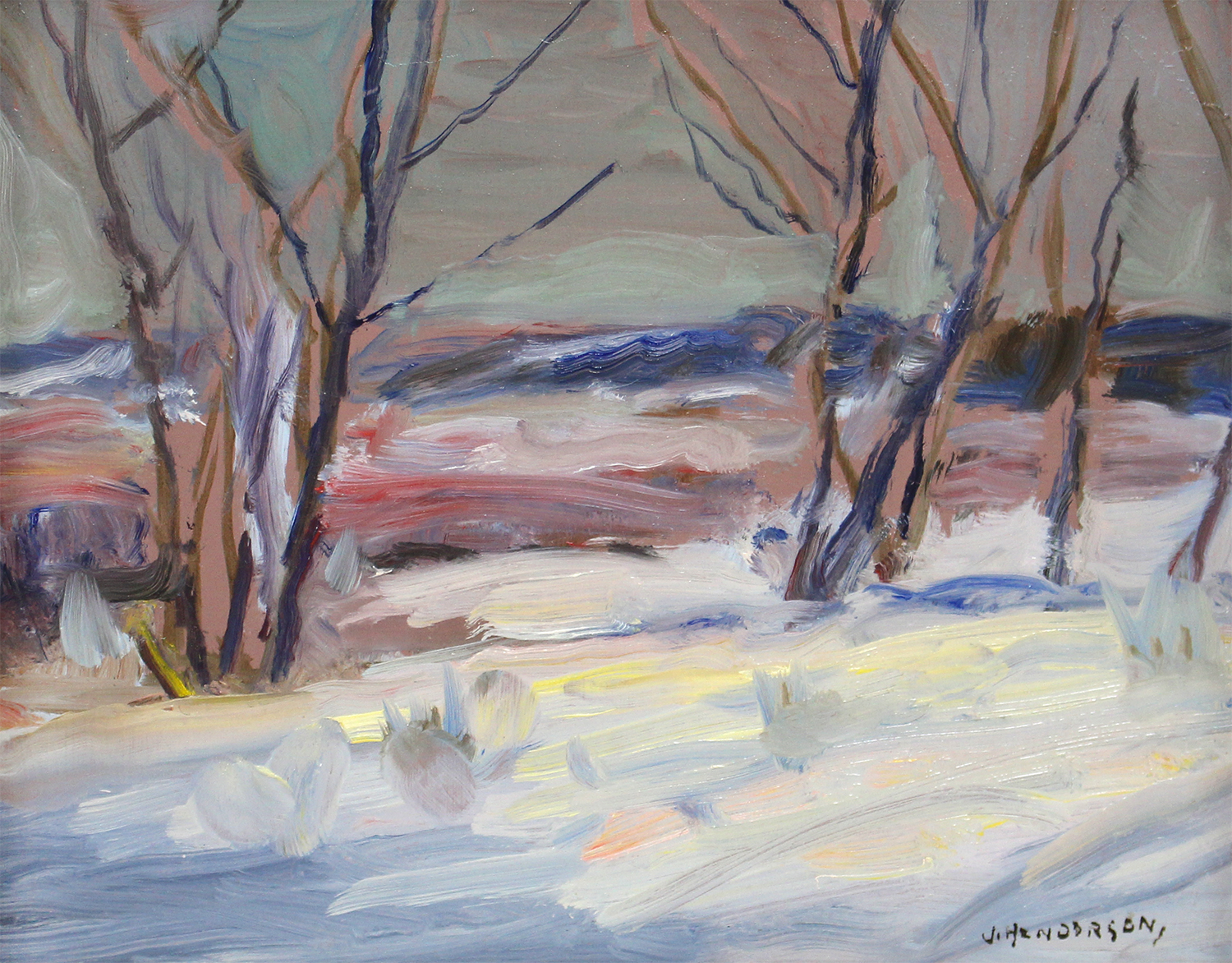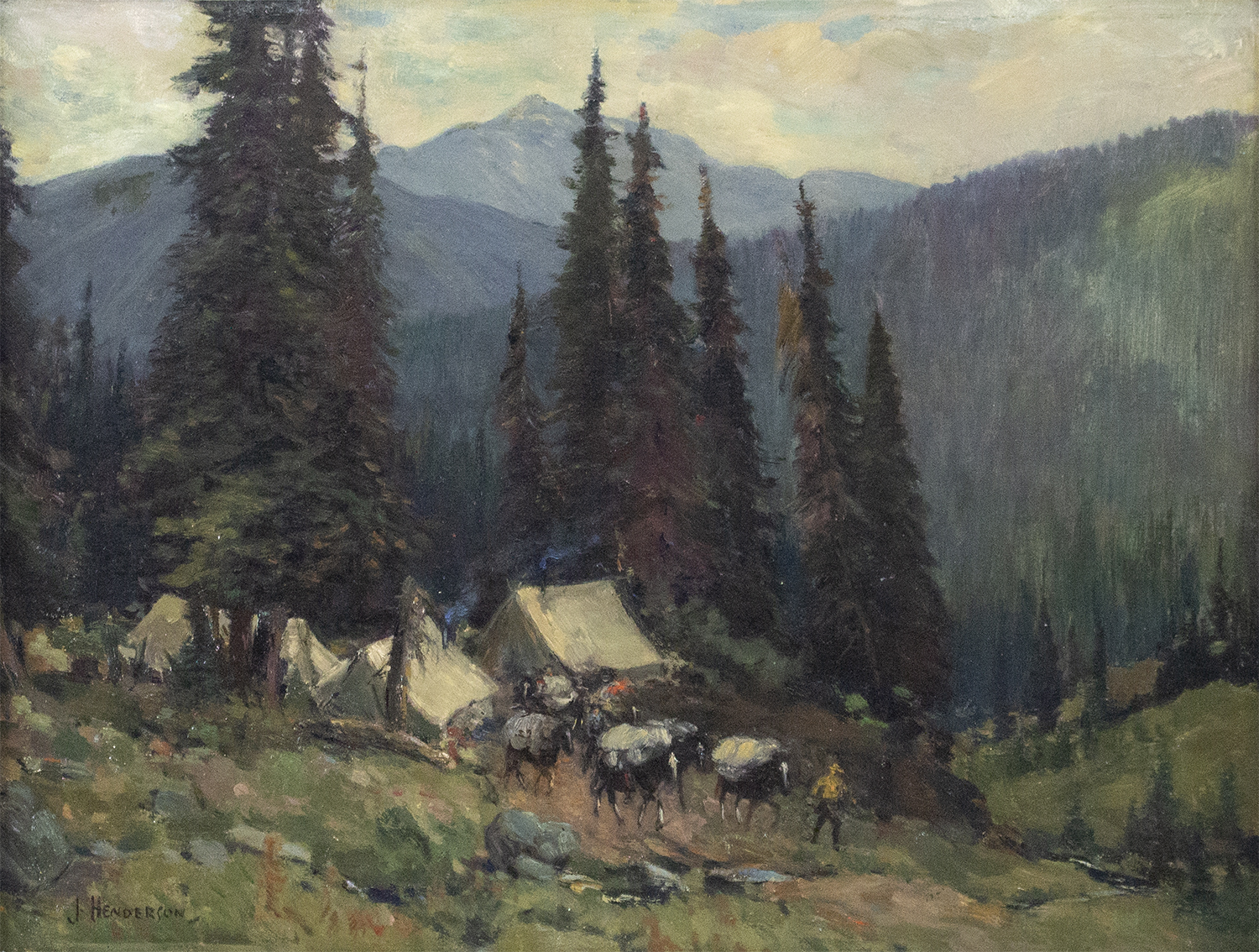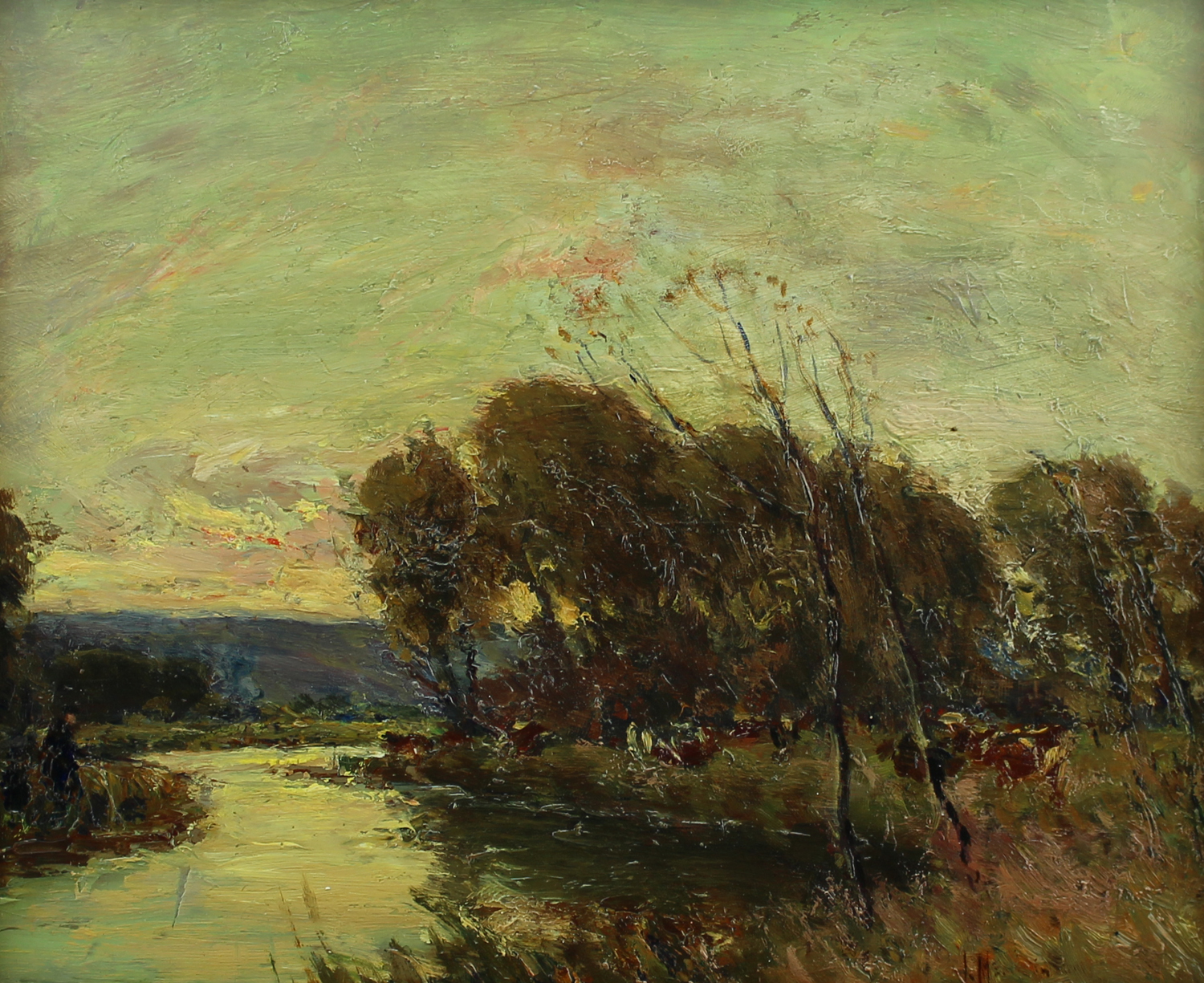James Henderson was born in Glasgow, Scotland on August 21st 1871, the son of a sea captain. As a young man he attended classes at the Glasgow School of Art, while being apprenticed to a lithography firm from age 16 to 23. In roughly 1894, Henderson moved to London to work as a commercial designer and was married in 1900 to Jeanie (nee Lang). The couple immigrated to Canada in 1909, landing first in Winnipeg and then in Regina where he worked at different forms of commercial art. The couple settled in the picturesque Fort Qu’Appelle, Saskatchewan circa 1916 and established themselves in a little cottage on several acres of land, later adding a studio.
Henderson lived and worked in Fort Qu’Appelle until the year of his death and many of his most celebrated works portray the landscape of the Qu’Appelle Valley and its inhabitants. His most famous works depict the landscape in all its moods and seasons, as well as detailed portraits of the First Nations communities in the nearby reserves of the Cree, Assiniboine and Sioux (1924-30). Fort Qu’Appelle’s Standing Buffalo Reserve named Henderson as Honorary Chief Wiciteowapi Wicasa “the man who paints the old men.”
Throughout his life, Henderson worked in oil, watercolour, charcoal, gouache and lithography. He was commissioned by the Province of Saskatchewan to paint a number of official portraits, including a portrait of King Edward VII completed for the Saskatchewan Legislative Chamber in 1922. In 1923 Henderson made a visit to Victoria to visit patrons Mr. and Mrs. Ernest E. Poole of Poole Construction to deliver commissioned portraits including Blackfoot chiefs as well as Sunshine, a portrait of the Poole’s daughter Ruth, and three landscapes. He painted works throughout the Rocky Mountains, British Columbia and especially Victoria, and in 1926 many Rocky Mountain and Pacific Coast views were exhibited in a Group Exhibition at Regina City Hall under the auspices of the Local Council of Women’s Art Committee. The Hendersons visited Scotland in 1934-35 where he painted prolifically.
Henderson’s principal patron and advocate was Norman Mackenzie of Regina. in 1926 a catalogue was published and a private exhibition at the Mackenzie residence through the University Women’s Club which included 103 pictures displayed throughout the home.
A member of the Ontario Society of Artists, Henderson exhibited widely across Canada and internationally including the Royal Canadian Academy, the National Gallery, the Winnipeg Art Gallery, the Montreal Museum of Fine Arts, and the Tate Gallery, London. The National Gallery of Canada held a solo exhibition of his works in 1927 as well as acquiring three of his paintings for their permanent collection. Today his works can be found throughout institutions across Canada as well as major private collections worldwide.
With the decline of Jean Henderson’s health the couple hired Roe (Rosie) Riess as resident housekeeper in 1928, who became a virtual daughter to the Hendersons, who were childless. Jean Henderson died in 1937, and James on July 5th, 1951 and both were buried overlooking the valley at Fort Qu’Appelle. Rosie continued to live in the house until her own passing in 1982.





